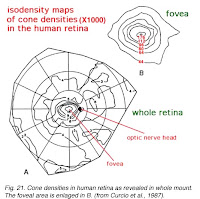 The days of being able to get a Nikon SB28 flash for £45 are gone, and I have never seen an SB26 for sale on ebay. So I have been searching for viable alternatives and I believed that I had found the almost perfect strobist flashgun here in the UK, unfortunately it falls just short of the mark.
The days of being able to get a Nikon SB28 flash for £45 are gone, and I have never seen an SB26 for sale on ebay. So I have been searching for viable alternatives and I believed that I had found the almost perfect strobist flashgun here in the UK, unfortunately it falls just short of the mark.
Its the Jessops AF360D, currently on sale for £99 with a 25% discount on top of that, if you order online and use a voucher code. Try googling for the voucher codes as they may change over time. £75 for a brand new flashgun isn't too shabby, and so dear readers, in order to help you out, I thought I would buy one and road test it for you.
The Flash is very similar in size and shape to the Nikon SB28, the flash head itself is a little longer. The head tilts and can swivel to face backwards. It has several zoom levels 24,28,35,50,70,85 and power can be set manually in 5 full stop increments from full power down to 1/16th. The guide no is 36 and it has an optical slave. It will work as a TTL flash if you have a compatible camera. The head also sports a built in bounce card and wideangle diffuser. Recycle time is a touch on the slow side at aproximately 4-5 seconds at full power, but once you drop to 1/2 or 1/4 it becomes acceptable. One feature that really excited me was the beep indicator. The documentation appeared to suggest that with the beep indicator on, the flash would beep when ready. But sadly that wasn't to be the case.
The build quality seems a little less solid than an SB28 and the zoom motor is very noisy and vibrates rather distressingly as though its about to strip its gears. In fact at one point the zoom motor went doo-lally and I had to turn the flash off to get it to shut up. All the controls are very easy and intuitive to use. I particularly liked the cheap slider switches for power and slave mode. However the build quality really does let this flash down. The flash foot on mine had a centre pin that was a little too short, and it wouldn't fire when attached to my minolta shoe adaptor or my sonia hotshoe. Eventually I attached it to a Kaiser hotshoe and it was able to fire. However there was a further problem, because none of the controls would work when attached to the hot shoe. I managed to get it working in the end by putting some gaffer tape over all the contacts except for the centre pin. I returned the flash to Jessops to see if it was a fault with my one, but it seems that its a design flaw. Presumably the tolerances were designed for the Nikon shoe, and not for third party shoes. This makes it a little tricky to use as there is no PC port.
The other disappointment for me was that with the beep indicator illuminated, there was no beep. It doesn't appear to do anything at all. All the button with the loudspeaker Icon seems to do is make the icon light up on the screen. When I tried it with a replacement flashgun, that didn't work either. So I can only assume its a feature that has been disabled or not available in manual mode. This was a pretty big disappointment to me because I was far more excited by the beep indicator than a grown man should ever be
Compared to the Nikon SB28 you are missing out on 1/3 stop intervals and 1/64 manual power or PC socket. But you gain a built in slave flash. I tested the slave flash, and it syncs at up to 1/1000s and possible faster. An unwelcome feature is the power saving function which activates after 3 minutes. This may become a nuisance.
If the beep indicator and the hot shoe had worked properly I would consider replacing some of my other flashguns. Certainly my old SB24's days are numbered. However given the build quality I wouldn't want to rely on a bag full of them for an important shoot. You can currently get an SB28 for around £69 on ebay, so the store price for the Jessops flash is possibly a bit high and given the build quality, I might even consider the heavily discounted £75 a little too steep.
If I had to choose between the Jessops 360AFD and a second hand SB28 or SB26, Nikon would win. But despite the problems with the hotshoe I would probably choose it over a Sunpak 383 or a Vivitar. If you really want to get a cheap flash fast, take your hotshoe and triggers to Jessops and try one out.







